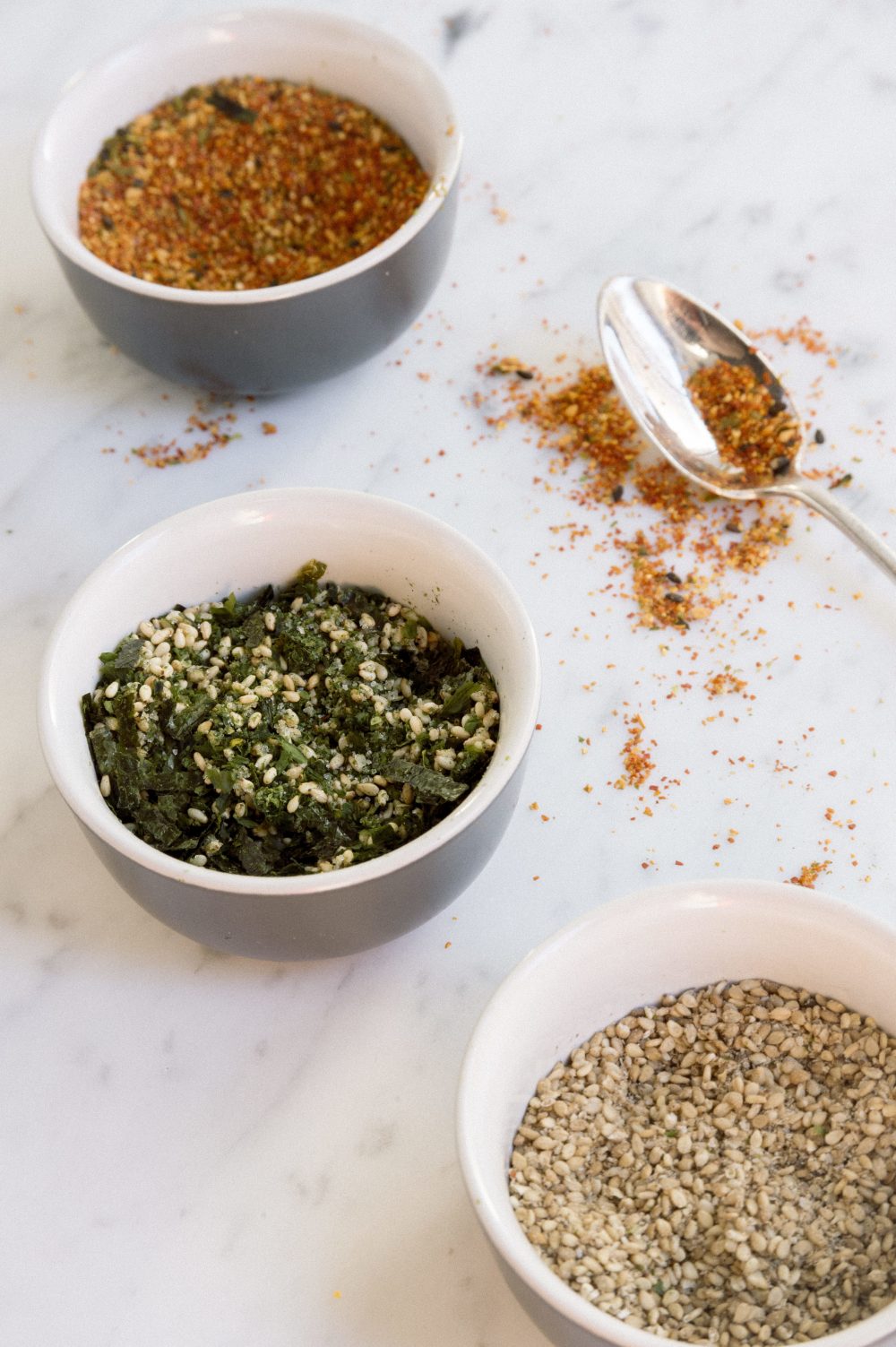
Japanese Rice Seasonings
We love the savory-salty-peppery crunch that a sprinkle of shichimi togarashi gives our soba noodles with asparagus and miso butter. It’s part of a larger family of Japanese seasoning blends meant to be sprinkled over rice, vegetables, meat and fish. Most are built from a base of toasted white or black sesame seeds and salt. Among our favorites: gomasio, which has lightly ground sesame seeds and salt and sometimes flakes of nori seaweed; furikake, which is coarser and can contain sugar, seaweed, dried vegetables, bonito flakes and shiso; and shichimi togarashi, which adds chili flakes, peppercorns, dried citrus peel and additional seeds, such as poppy and hemp. We use them to season scrambled or fried eggs, popcorn, broiled fish, fried chicken and roasted carrots. Most varieties of the seasonings can be found in the grocer’s international foods aisle.
In Thailand, Heavy Cleavers Lighten the Load
While exploring Chiang Mai in northern Thailand, we discovered a style of knife we had never encountered before in a metal shop just outside the city’s gates on Chang Moi Road. For only $10, we bought a Thai-style cleaver, which has a curved blade and two holes in it (for hanging). Few knives rival this cleaver when it comes to heavy-duty tasks such as chopping up a chicken. The knife weighs just under a pound and a half, so gravity does most of the work. ImportFood.com sells similar cleavers in the same price range.
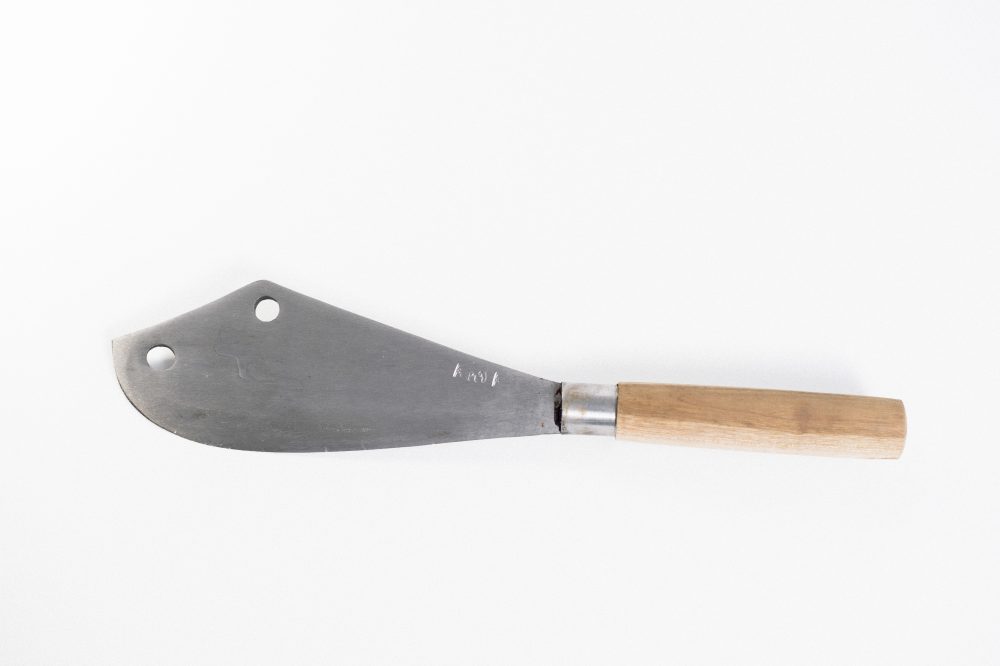
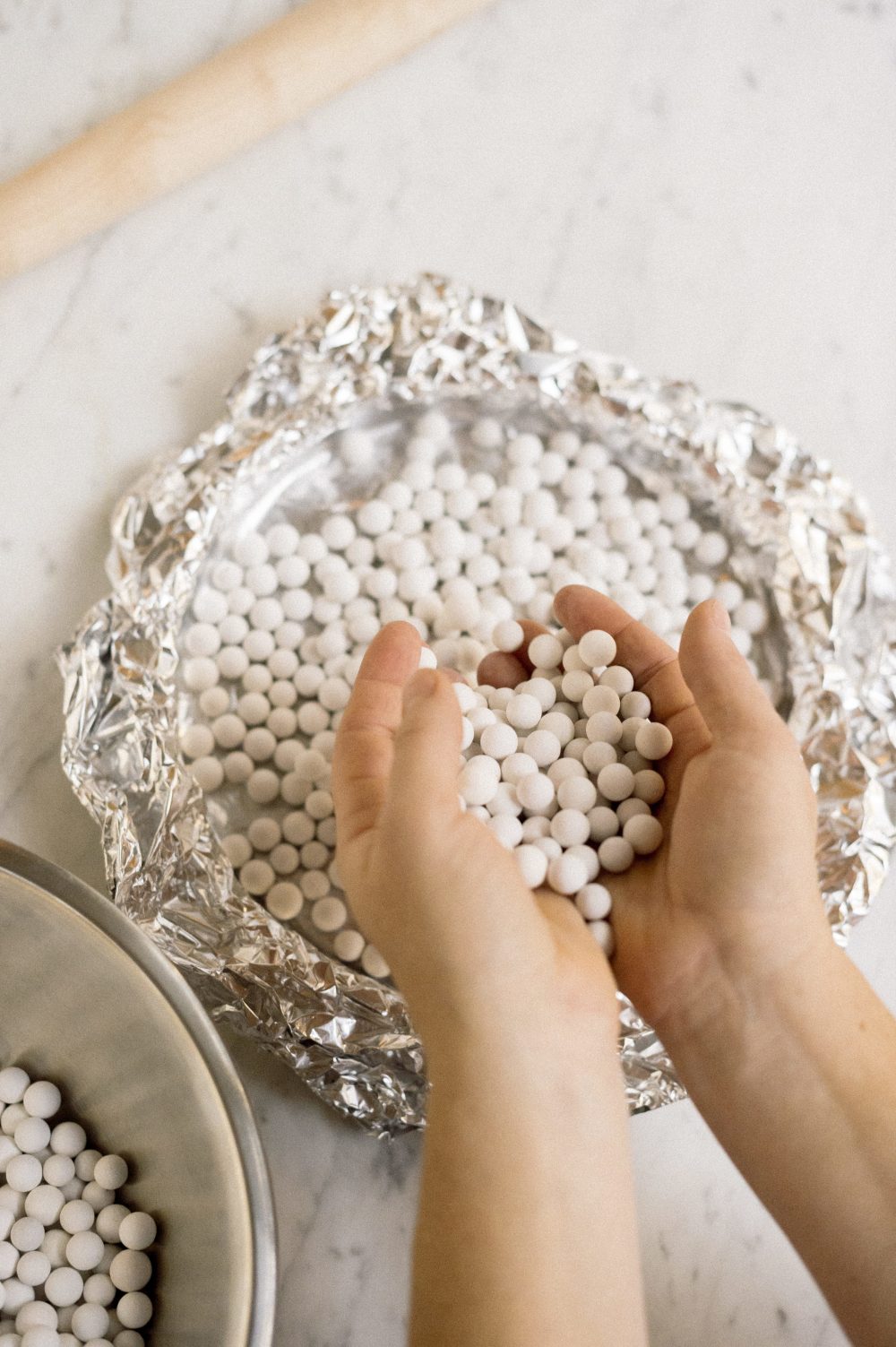
A Weighty Solution to Slumped Pie Crusts
Spare the weights, spoil the pie dough. It’s a lesson we learned while developing our single-crust pie dough for the charter issue of Milk Street Magazine. When blind baking, line the pie or tart shell with heavy-duty foil (or a double layer of standard foil) and gently press the foil into the edges. Fill the pie shell a generous three-quarters full with pie weights. Bake for 25 minutes at 375°F with pie weights, rotating halfway through, then another 5 to 7 minutes without the weights. We like ceramic pie weights, but a pound of dry beans or rice works, too. Avoid glass pie weights, which are too heavy and retain heat too long. And don’t remove the foil and weights until the dough is set and dry. A moist or partially set crust can slump or shrink after the weights are removed. To check, lift some of the foil and use your finger to feel the edge of the pie or tart for moisture.
The Internet of Things Comes to Your Bookshelf
The extensive research that goes into each Milk Street recipe often finds us plumbing the depths of the internet, which can be faster than thumbing through our cookbook library. But the website EatYourBooks.com brought web-like searchability to our bookcase. The site creates a custom online database of your cookbooks that’s searchable by keyword and ingredients, as well as recipe, book title and author. You compile your database with ISBN numbers (bar code). For our large library, a USB bar code scanner (under $20 on Amazon) was more efficient. Search results can be filtered by ethnicity, occasion, even course, which made it easy for us to find every Thai fried rice recipe we had in house, right down to the page.
Fresh Turmeric for Cooking
After returning from Thailand, where fresh turmeric is common, we were surprised—and pleased—to find it at our local grocer. It tastes brighter and more peppery than dried turmeric, with a hint of Sichuan peppercorns. Andy Ricker uses it in a chili paste made in a mortar and pestle. He combines chilies, galangal, lime leaf, shallot, garlic, salt, sugar and shrimp paste. For a simpler version, use a food processor to make a paste from 3 ounces of peeled fresh turmeric, 2 garlic cloves, 1 small shallot (roughly chopped), 1 tablespoon light brown sugar and 1 teaspoon kosher salt. Use the paste to coat chicken before roasting or braising, or sauté it as a base for soups, stews, sauces and dressings. Fresh turmeric resembles ginger root. It needs to be peeled before smashing, grating or dicing.
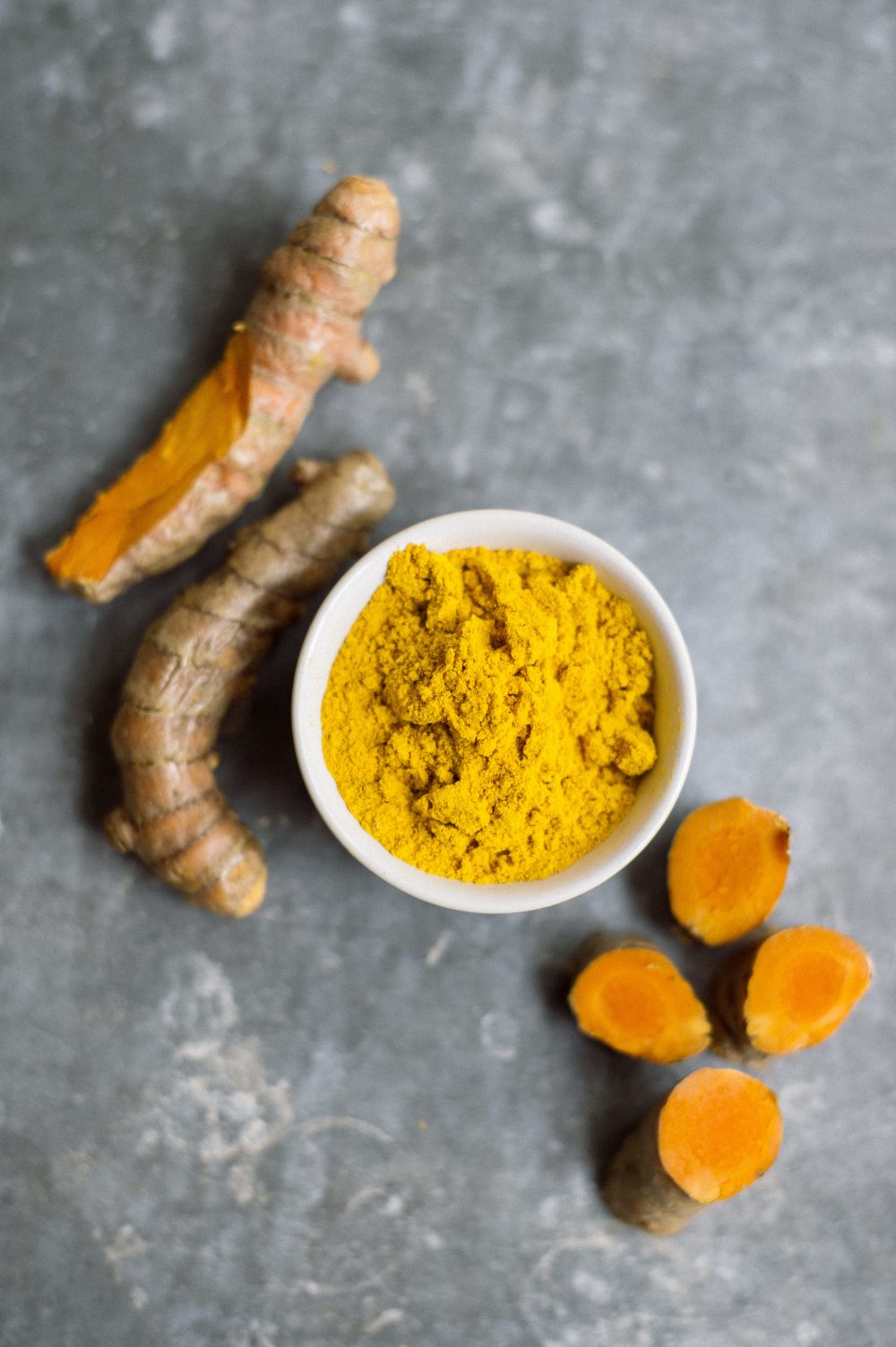
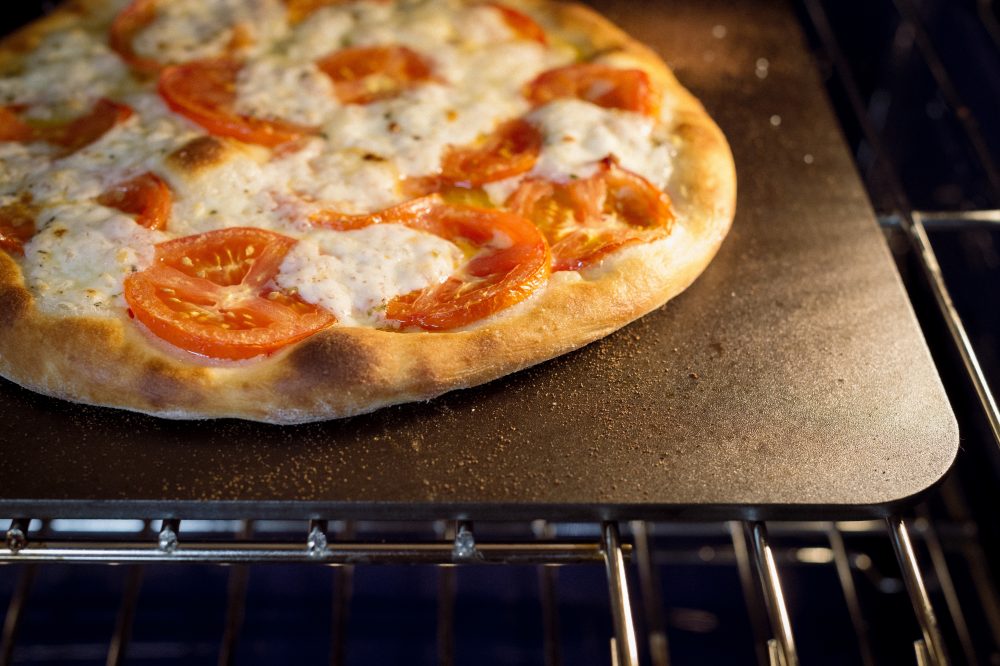
Steel Yourself for Better Baking
Even, consistent heat is the key to better baking. That’s why we love the Baking Steel, a ¼-inch-thick sheet of polished stainless steel that sits on your oven rack. Like a baking stone, the steel absorbs and regulates heat, mitigating temperature fluctuations. We used ours to bake flatbreads and pizza, and it turned out restaurant-caliber bubbling, charring and chew. While it’s designed for pizzas and breads, the steel also worked wonderfully with cookies. Chocolate chip cookies—baked on baking sheets placed on the steel—had better browning than batches baked directly on the oven rack. The Baking Steel comes in a variety of shapes and sizes. We liked the 16-by-14-inch model, which sells for $89 at BakingSteel.com.
Extra-Virgin Fish Sauce?
Not all fish sauces are created equal, or so we learned from Andrea Nguyen, author of “The Bahn Mi Handbook.” The best varieties are made with just anchovies and salt and are fermented for about a year in large barrels. Lesser formulas use different fish or just the viscera, herbs and spices, hydrolyzed proteins and preservatives, or they are fermented for less time. But with fish sauce, time matters: The longer the fermentation, the less fishy and the nuttier—and more umami—the flavor. No, there is no “extra-virgin” fish sauce, but there is a first pressing—the first draining of liquid from the bottom of the barrel. Nguyen outlined the three grades of fish sauce. The best quality (the first pressing) is used at the table; the second goes into dipping sauces; and the third is used for cooking. At Milk Street, we tasted a variety of fish sauces and agreed with Nguyen that Red Boat had the best color and a flavor that was briny, but not overly fishy. While some brands had an unpleasant low-tide aroma, Red Boat smelled rich and savory.
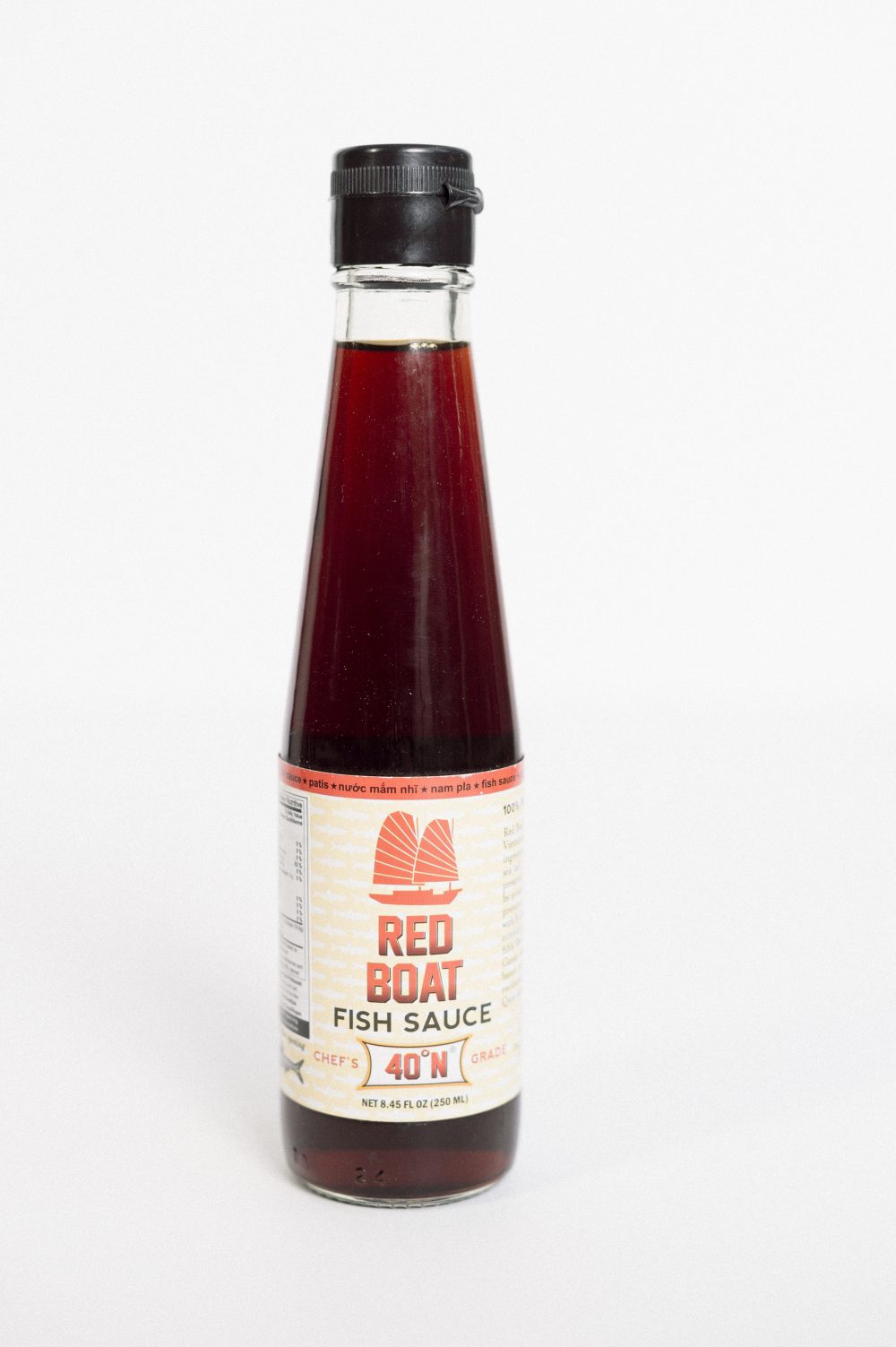
I use a handheld milk frother to make lattes. I use 2 percent milk. Sometimes my milk froths at first but collapses before I add the coffee. I’ve also noticed that lattes made with milk from freshly opened cartons foams better than older milk. Any idea why this happens? – Diana Burke, Norridge, Illinois
We’ve experienced similar foam failures, and we suspected fat content and temperature were the culprits. A few frothing experiments proved that true.
Fat molecules destabilize foam, particularly when cold. Heat mitigates this. In our tests, all milk varieties foamed well and sustained a froth as long as they were properly heated (between 104°F and 122°F). When cold, only fat-free milk foamed, because there were no fat molecules to interfere.
And you are right about fresh milk foaming better. As milk ages, natural enzymes break down the fat, freeing fatty acids which weaken foam. So for the strongest foam, warm up the freshest milk you can find.



